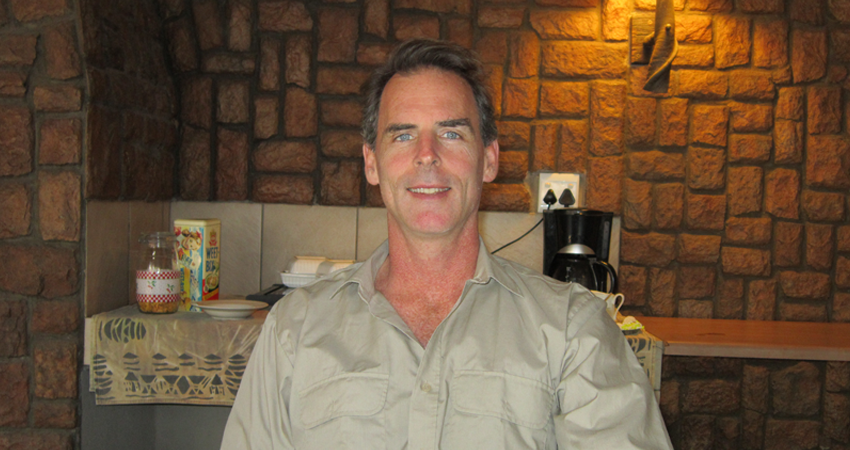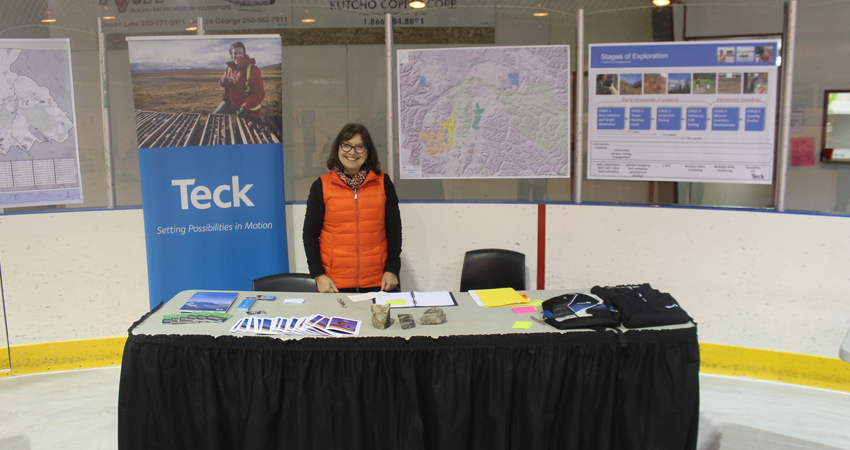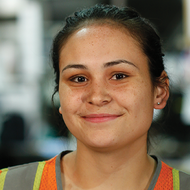Vesta Filipchuk, Manager, Community Relations, North American Exploration, and Tony Kalma, Community Relations, Regional Leader for Exploration in Australia, share their thoughts and experiences on the importance of building relationships with Indigenous Peoples at the outset of our mineral exploration activities.
Collecting rocks and soil samples can tell geologists much about an area, but when Teck works with groups native to the land, so much more is uncovered.
In Canada, the United States, Chile, Peru and Australia, many of our exploration projects are located on or adjacent to Indigenous Peoples’ lands. This makes early engagement critical, as it sets the right tone for our relationships as we work through the various stages of the mining life cycle, including exploration.
“Early on in our engagement with Indigenous Peoples, the most critical piece is to have that first face-to-face connection with the communities, to share information and determine how they would like us to work on the land,” says Vesta Filipchuk, Manager, Community Relations, North American Exploration.
“Our exploration teams are very involved in first building those relationships, providing information on prospective projects and having those early discussions. It’s important to take time, pace it, really listen to concerns and issues: meaningful engagement is critical to having a successful project.”
In Australia, where Teck explores for high-grade zinc, Tony Kalma, Community Relations, Regional Leader, notes that building relationships with Indigenous Peoples starts with mutual respect and understanding cultural differences.
“It is important to listen to Traditional Elders explain their people’s needs,” says Tony.
Notably, Teck has worked closely with the Waanyi People, an Indigenous Australian group who occupy the savannah and freshwater country of north Queensland, an area where Teck conducts exploration activities. Last year marked a milestone when a formal agreement was reached between Teck and the Waanyi People, establishing protocols for the protection of cultural heritage and providing employment opportunities.
“On-the-ground engagement typically starts with a heritage survey and consultation with the group’s elders, who help Teck understand the importance of land by explaining its cultural and historical significance,” explains Tony.

Above: Tony Kalma, Community Relations, Regional Leader, Exploration, Australia, visiting the Kaokoland region of Namibia.
Resources like waterways, animal pathways, natural medicines or trees and rivers of spiritual or cultural significance are described, and these sacred and important aspects may be excluded from exploration activities.
“Using maps and images to help communicate the exploration work and its possible impacts is especially important,” notes Tony.
“We have heard that for the elders, one of the benefits of consultation is they get an opportunity to get back on their land, which is becoming more and more difficult to do,” says Tony. “In a lot of cases, the elders are also concerned about connecting with the young people, and engaging in this process allows them to share their knowledge with the next generation, helping strengthen culture, respect and resilience in local communities.”
Alec Doomadgee, Chairperson of the Waanyi People Native Title holders, adds: “The agreement and implementation of these protocols to protect the culturally significant parts of the Lower Gulf, together with new opportunities for our youth to work with Teck is a step in the right direction for the Waanyi people. We look forward to continuing to build a mutually beneficial relationship into the future, which will help to secure the future generations of Waanyi people.”
In the Americas, Vesta has also witnessed first-hand how the company’s focus on relationship-building with Indigenous Peoples during exploration has strengthened over time, pointing to our work with the Kwadacha First Nation located in north-central B.C. as an example.
“It’s interesting to see how through reaching agreements, we can make some positive economic development contributions to communities, which enables them to fund something that’s meaningful for them and provides sustainable benefits,” says Vesta.
“I’ve heard many powerful stories while walking with people on their traditional lands. One elder told me, ‘I feel like I’d never been heard before ‘til now.’ It really made me feel we are on the right path.”



